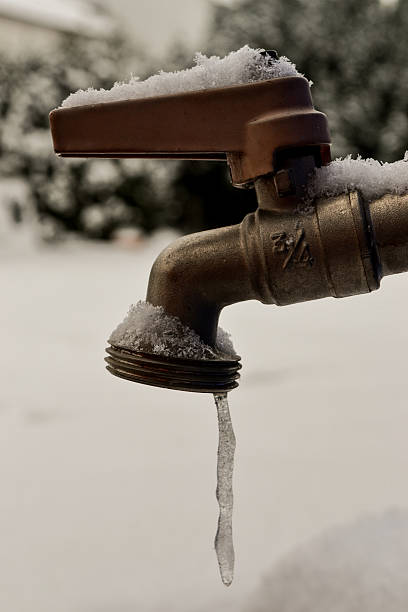Ways to Safeguard Plumbing System from Freezing: Critical Advice
Ways to Safeguard Plumbing System from Freezing: Critical Advice
Blog Article
This post further down on the subject of How to prepare your home plumbing for winter weather is incredibly enlightening. Have a go and draw your own assumptions.

Cold weather can ruin your plumbing, particularly by freezing pipes. Below's just how to stop it from happening and what to do if it does.
Intro
As temperatures drop, the threat of icy pipelines increases, potentially bring about costly repair services and water damages. Understanding how to avoid frozen pipes is important for home owners in cool environments.
Avoidance Tips
Protecting susceptible pipes
Cover pipelines in insulation sleeves or utilize heat tape to protect them from freezing temperature levels. Concentrate on pipes in unheated or exterior locations of the home.
Heating techniques
Maintain indoor spaces properly warmed, particularly areas with plumbing. Open closet doors to permit cozy air to circulate around pipelines under sinks.
Just how to recognize frozen pipelines
Seek lowered water circulation from taps, uncommon smells or noises from pipes, and noticeable frost on subjected pipes.
Long-Term Solutions
Architectural changes
Think about rerouting pipes far from outside walls or unheated locations. Add added insulation to attics, cellars, and crawl spaces.
Upgrading insulation
Buy top notch insulation for pipes, attic rooms, and walls. Appropriate insulation helps preserve regular temperatures and reduces the risk of icy pipes.
Shielding Outdoor Pipes
Garden pipes and outside faucets
Separate and drain pipes yard tubes before winter. Set up frost-proof spigots or cover exterior taps with shielded caps.
Recognizing Frozen Pipelines
What triggers pipes to ice up?
Pipes ice up when exposed to temperature levels below 32 ° F (0 ° C) for expanded periods. As water inside the pipelines freezes, it broadens, taxing the pipe wall surfaces and possibly causing them to break.
Risks and damages
Icy pipelines can lead to water disruptions, property damage, and costly repair services. Ruptured pipelines can flooding homes and cause comprehensive structural damage.
Indications of Frozen Water Lines
Determining icy pipelines early can avoid them from rupturing.
What to Do If Your Pipes Freeze
Immediate actions to take
If you think frozen pipelines, keep taps available to ease pressure as the ice thaws. Use a hairdryer or towels taken in hot water to thaw pipelines gradually.
Final thought
Protecting against frozen pipelines requires positive actions and quick actions. By recognizing the causes, indications, and safety nets, homeowners can safeguard their plumbing during cold weather.
5 Ways to Prevent Frozen Pipes
Drain Outdoor Faucets and Disconnect Hoses
First, close the shut-off valve that controls the flow of water in the pipe to your outdoor faucet. Then, head outside to disconnect and drain your hose and open the outdoor faucet to allow the water to completely drain out of the line. Turn off the faucet when done. Finally, head back to the shut-off valve and drain the remaining water inside the pipe into a bucket or container. Additionally, if you have a home irrigation system, you should consider hiring an expert to clear the system of water each year.
Insulate Pipes
One of the best and most cost-effective methods for preventing frozen water pipes is to wrap your pipes with insulation. This is especially important for areas in your home that aren’t exposed to heat, such as an attic. We suggest using foam sleeves, which can typically be found at your local hardware store.
Keep Heat Running at 65
Your pipes are located inside your walls, and the temperature there is much colder than the rest of the house. To prevent your pipes from freezing, The Insurance Information Institute suggests that you keep your home heated to at least 65 degrees, even when traveling. You may want to invest in smart devices that can keep an eye on the temperature in your home while you’re away.
Leave Water Dripping
Moving water — even a small trickle — can prevent ice from forming inside your pipes. When freezing temps are imminent, start a drip of water from all faucets that serve exposed pipes. Leaving a few faucets running will also help relieve pressure inside the pipes and help prevent a rupture if the water inside freezes.
Open Cupboard Doors
Warm your kitchen and bathroom pipes by opening cupboards and vanities. You should also leave your interior doors ajar to help warm air circulate evenly throughout your home.

I recently found that write up about 6 Ways to Prevent Frozen Pipes when doing a lookup on the search engines. Do you know about anybody else who is interested in 6 Ways to Prevent Frozen Pipes? Be sure promote it. Thank-you for your time spent reading it.
Book A Service Call Report this page